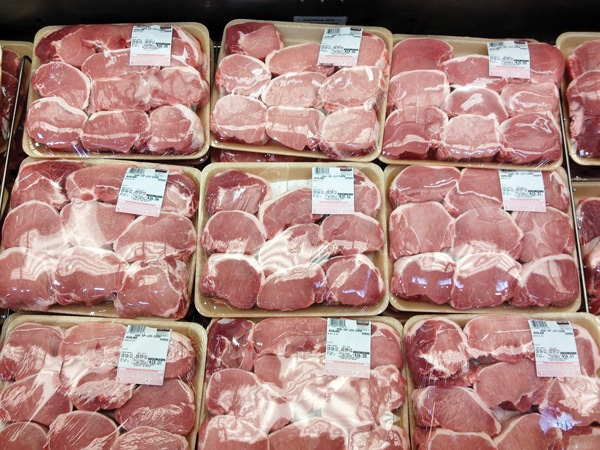New Study Targets Pork Quality
The 2012 National Retail Benchmarking Study is a massive project divided into two parts. The first part and first year have been devoted to the development of a computer model that randomizes selection and aides collection of data from retailers and club stores that sell pork products, both prepackaged and those prepared for sale in the backroom.

The 2012 National Retail Benchmarking Study is a massive project divided into two parts. The first part and first year have been devoted to the development of a computer model that randomizes selection and aides collection of data from retailers and club stores that sell pork products, both prepackaged and those prepared for sale in the backroom.
For this initial effort, principal investigator David Newman of North Dakota State University (NDSU) and a team of university animal scientists across the country visited 112 stores in 67 cities in 25 states. Scientists studied 32 distinct pork markets and pored over 8,000 packages of 75 different brands of pork.
“This is a top-down approach to looking at the quality of pork that is presented to consumers in the retail meat case. We looked subjectively at pork color, firmness, intramuscular fat, cut thickness, price, type of packaging and product label claims.
“We also collected temperature cooking recommendations (USDA has approved 145°F with a 3-minute rest for whole muscle cuts of pork) to see how well retailers and packers are doing in meeting those guidelines,” Newman says.
Packaged products were then shipped to a university meat science lab to conduct objective measurements of color, intramuscular fat and tenderness to identify possible areas of improvement, he adds.
“One of the interesting things about data collection and the model is our unique ability to be able to sort through all of this data very easily. We can look at this product and sort by region, retailer and individual packer if we want to,” Newman points out.
He says product can also be sorted by enhancement type, which is a big issue when it comes to tenderness and color, making the results valuable to retailers, but also to packers and processors when it comes to meeting pork quality demands of consumers.
The NDSU model was able to randomize and, thus, capture demographics of the various regions of the country as well as pork demographics. “There are a lot of cuts that are regional. If you travel south into my home state of Missouri, you will find pork blade steaks in every grocery store. But where I live now, in North Dakota, few people know what a pork steak is,” Newman says.
The second part of the project will be to analyze all of the data and present a report to the Pork Board by the first part of 2013, he says.
Newman remarks this is the first pork quality benchmarking audit that has been done at the retail level and not at the packing plant level.
Critical Juncture
Newman says these types of benchmarking projects are important for two reasons. First, they’re critical to determine if the current characteristics of pork in the retail case are actually what consumers desire, in order to give them a positive eating experience that will earn a return trip to the store to purchase more pork.
Objective measurements help validate there are satisfied consumers and assure the pork industry that it is taking the right steps toward improving pork quality.
Second, these types of projects are important because the pork industry, which is under duress due to rising costs of production, needs all the ammunition it can get to remain competitive as a global protein source.
“We need to make sure that we are on top of the science, the further processing and the packaging — but most of all that we never forget about our customer,” Newman emphasizes.
This benchmarking project hopefully is a first step toward building a dataset that suggests the pork industry is doing the right thing or at the very least points out areas of product variation that need improvement, he says.
This project is funded by Pork Checkoff.
About the Author(s)
You May Also Like





